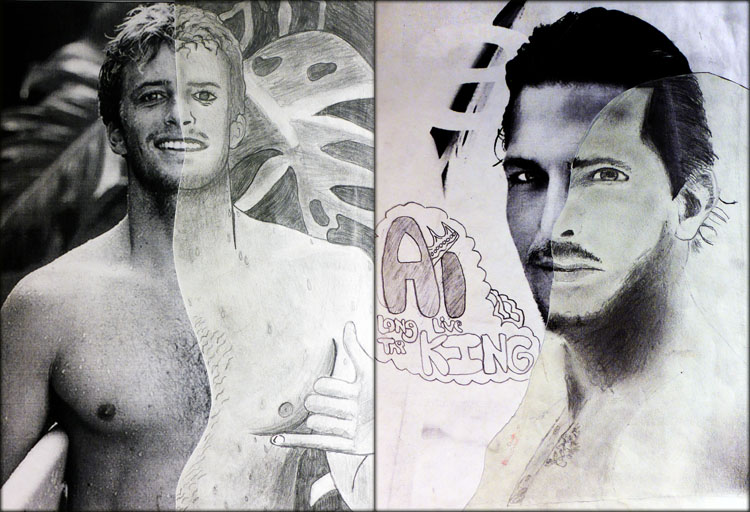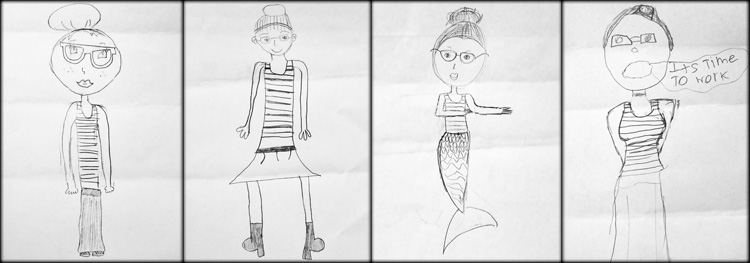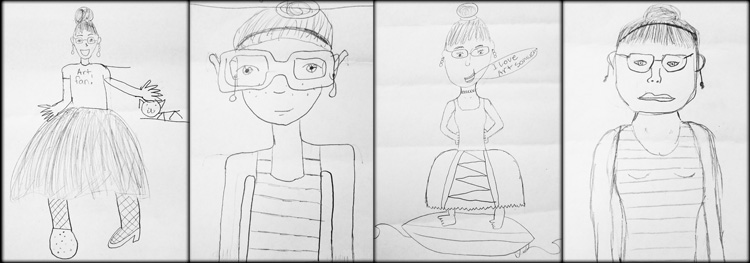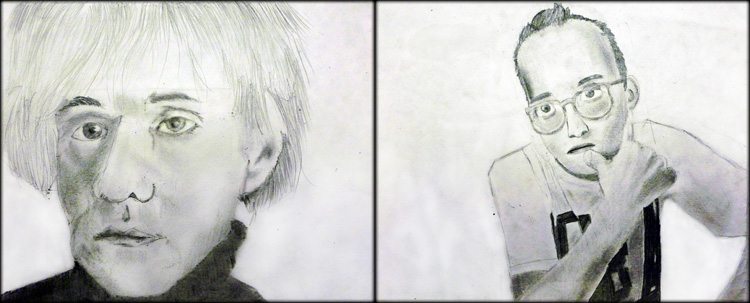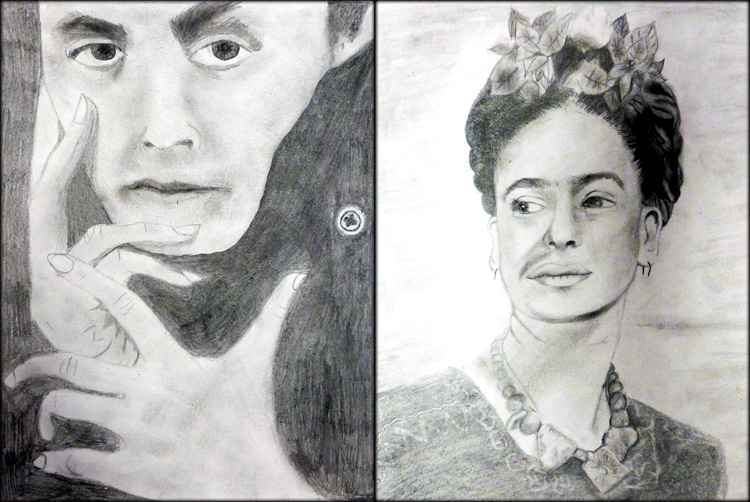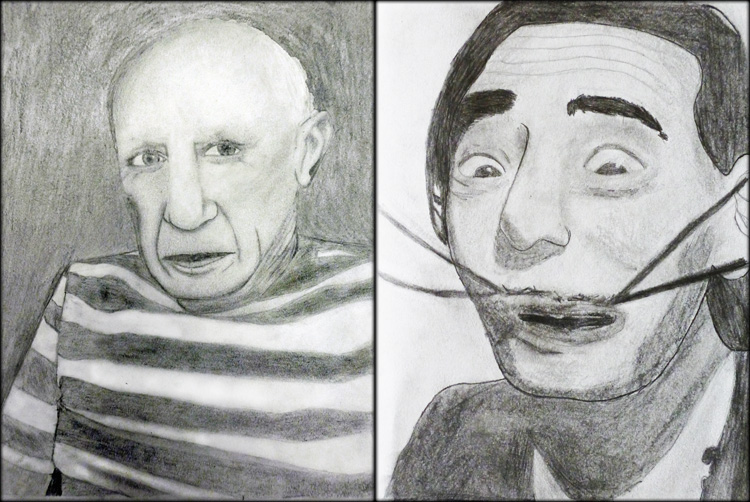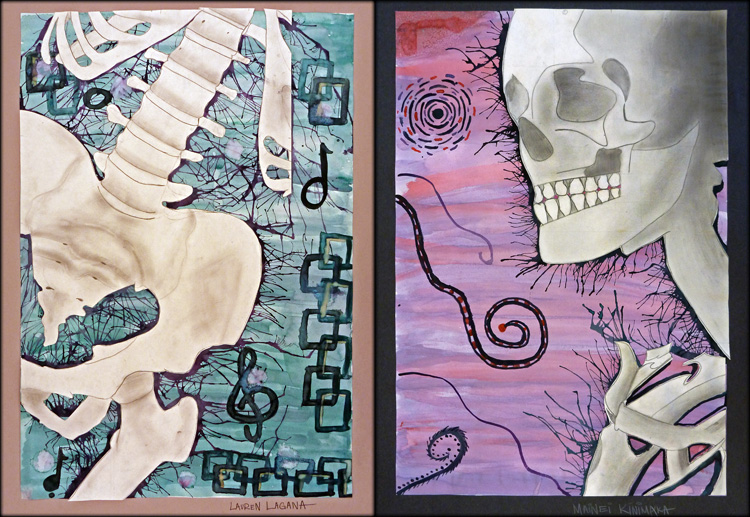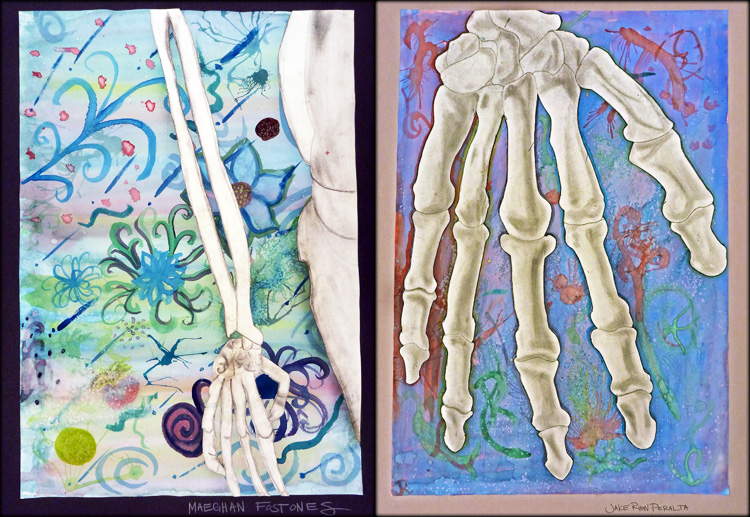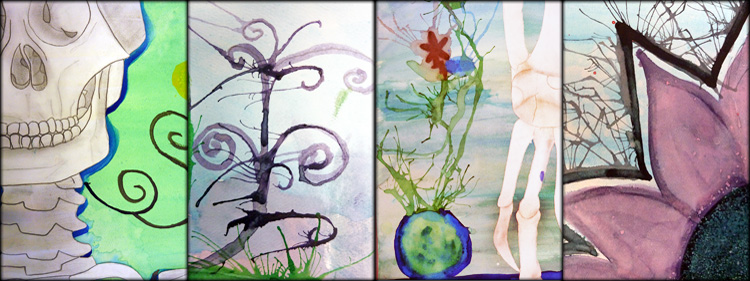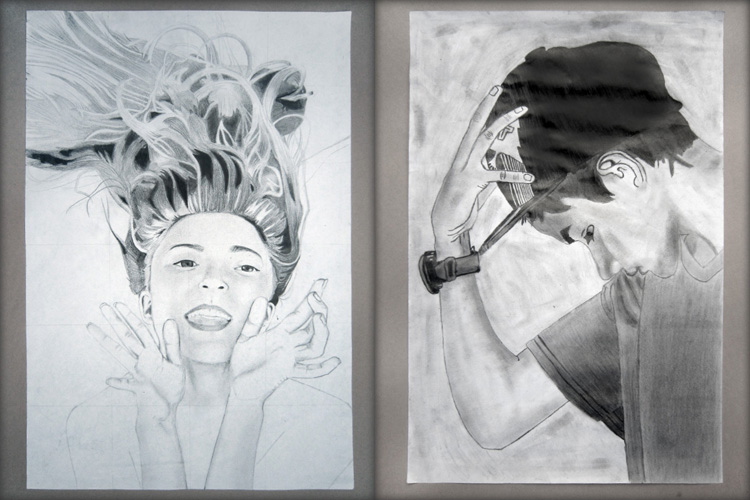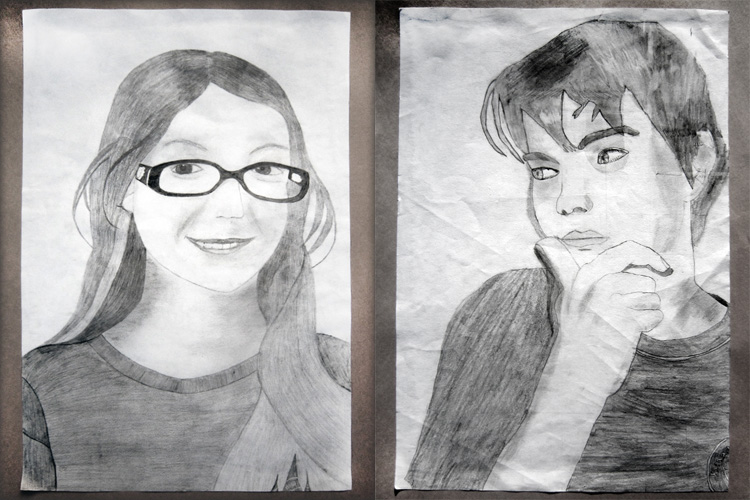Half Portrait
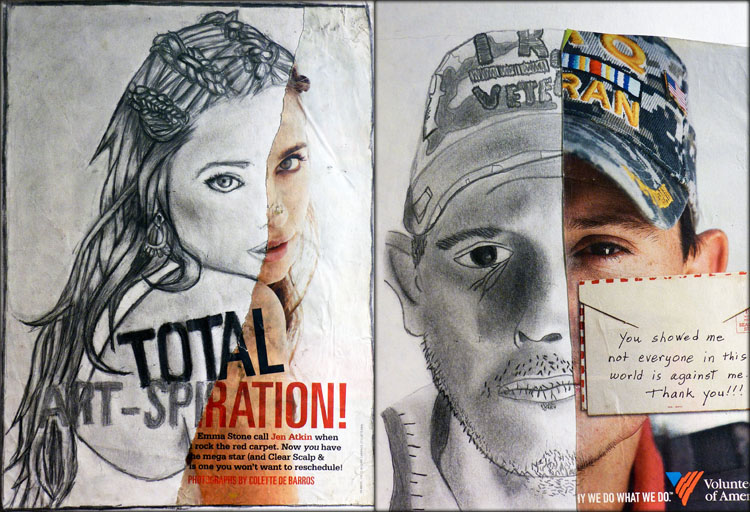
This lesson was so successful the first time, that I decided to bring it back again this year as an introduction to drawing the human face. First students practiced and developed skills to identify and map out guidelines for correct facial proportions. Next they learned shading techniques to create values ranging from the darkest shadows to the brightest highlights. All of this was done with a regular #2 pencil!

Portraits were selected from magazines and cut so that students had to draw at least half of the face. The original picture was also limited to the torso or shoulders up (no full body images), and needed to fill the whole page. This allowed students to focus on drawing the face.
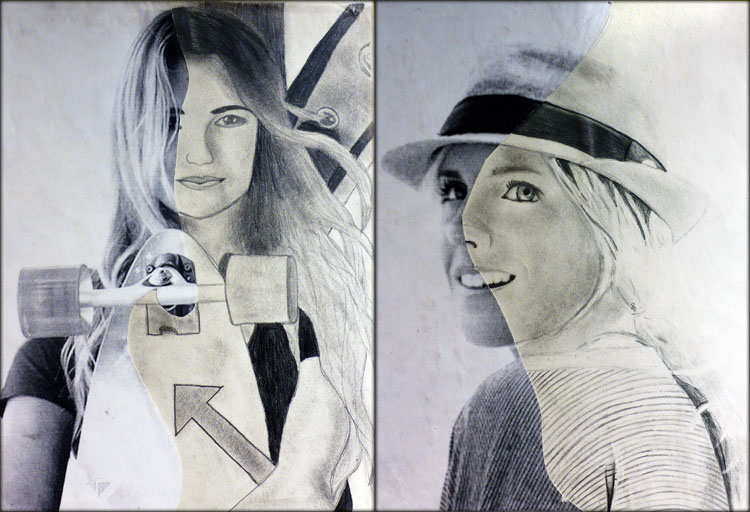
While many students searched through magazines to find an interesting or inspiring image, I provided photocopies of a few local Kauai surf heroes to choose from as well. Pictured above are Alana Blanchard and Leila Hurst, while the bottom images include Sebastian Zietz and Andy Irons. Other local surfing professionals included Dustin Barca, Bethany Hamilton, Malia Manuel and Evan Valiere.
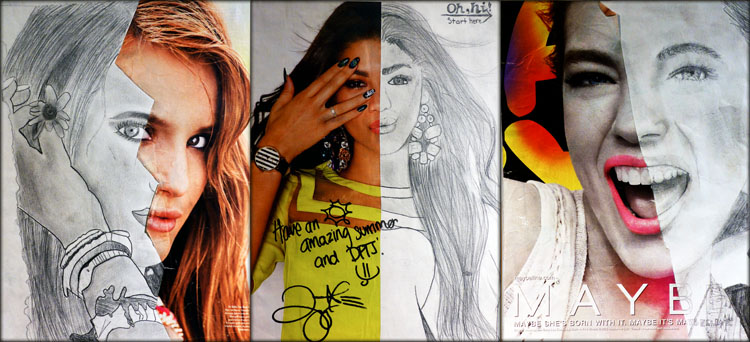
Students really seemed to enjoy this lesson, and several students chose to draw more than one. I may bring this lesson back in the future with a different photo inspiration, like a “selfie”!
